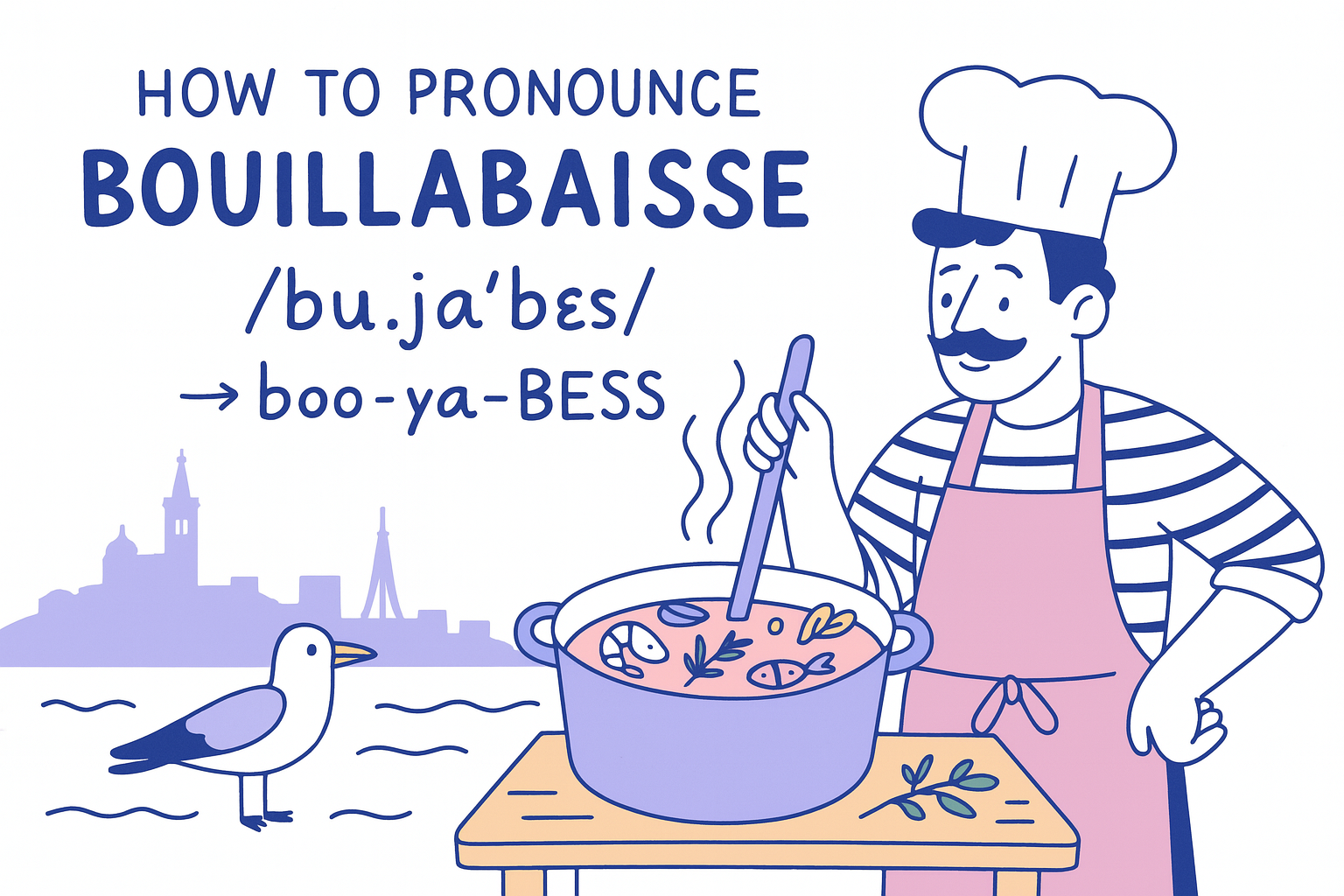How to pronounce
Bouillabaisse
If you’re reading a French cookbook or planning a trip to Marseille, you may wonder how to say “bouillabaisse.” The spelling looks daunting, but it’s easy once you learn the rhythm.
Step‑by‑Step Pronunciation Guide
/bu.jaˈbɛs/ → boo‑ya‑BESS
Breaking it down
• boo – like the start of “boulevard,” a quick “boo” sound
• ya – a short glide “yah”
• BESS – stressed syllable, rhymes with “mess”
Say it in three beats: boo‑ya‑BESS, with the main stress on the last syllable.
Common Mispronunciations
• “boo‑lah‑BASE” ending with “base”
• “boo‑yah‑BAY” dropping the final s sound
• Saying all four Ls—remember the double l is silent in French
Practice Sentences
• “We ordered authentic bouillabaisse on the Marseille waterfront.”
• “A true bouillabaisse uses at least three kinds of local fish.”
• “Her recipe for bouillabaisse includes saffron and orange zest.”
Bouillabaisse in Food Culture
This hearty stew began as a fishermen’s dish using unsold catch. Today, bouillabaisse is a signature of Provençal cuisine, celebrated in fine‑dining restaurants worldwide. Knowing how to pronounce it—boo‑ya‑BESS—adds flair when you order or discuss French food.

Definition of
Bouillabaisse
Bouillabaisse is a traditional Provençal fish stew from Marseille, France. Made with assorted Mediterranean fish and shellfish, tomatoes, saffron, and herbs, it is served with toasted bread and garlicky rouille sauce.
What does it mean
Bouillabaisse
From Provençal French bouiabaisso—a blend of the verbs boulhir(“to boil”) and abaissar (“to reduce heat”). The name describes the traditional method: boil the fish broth, then lower the flame to simmer.
Frequently asked questions
Auto-record your calls for instant
feedback on communication

Know how to improve speaking
after every Google Meet call





.svg)
.avif)
